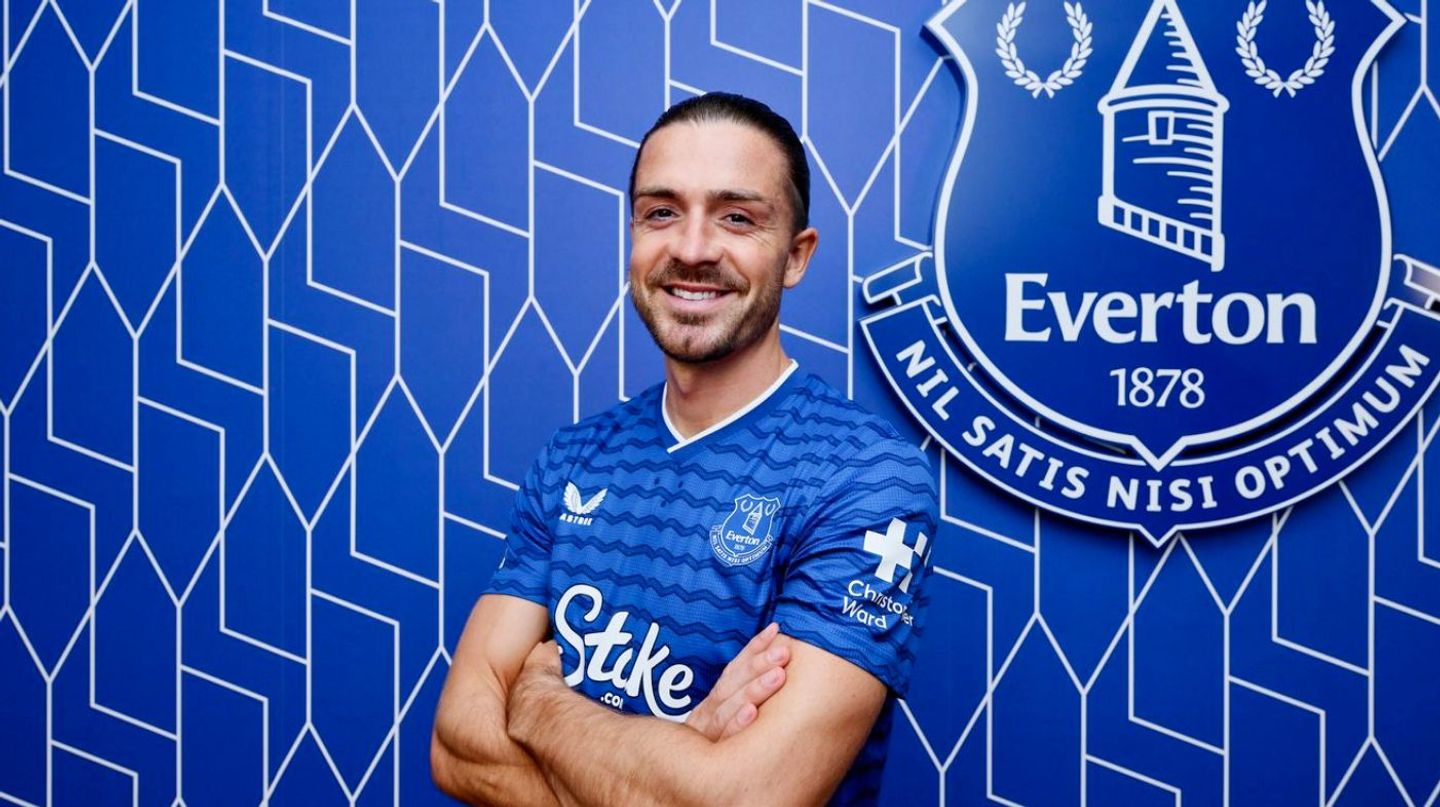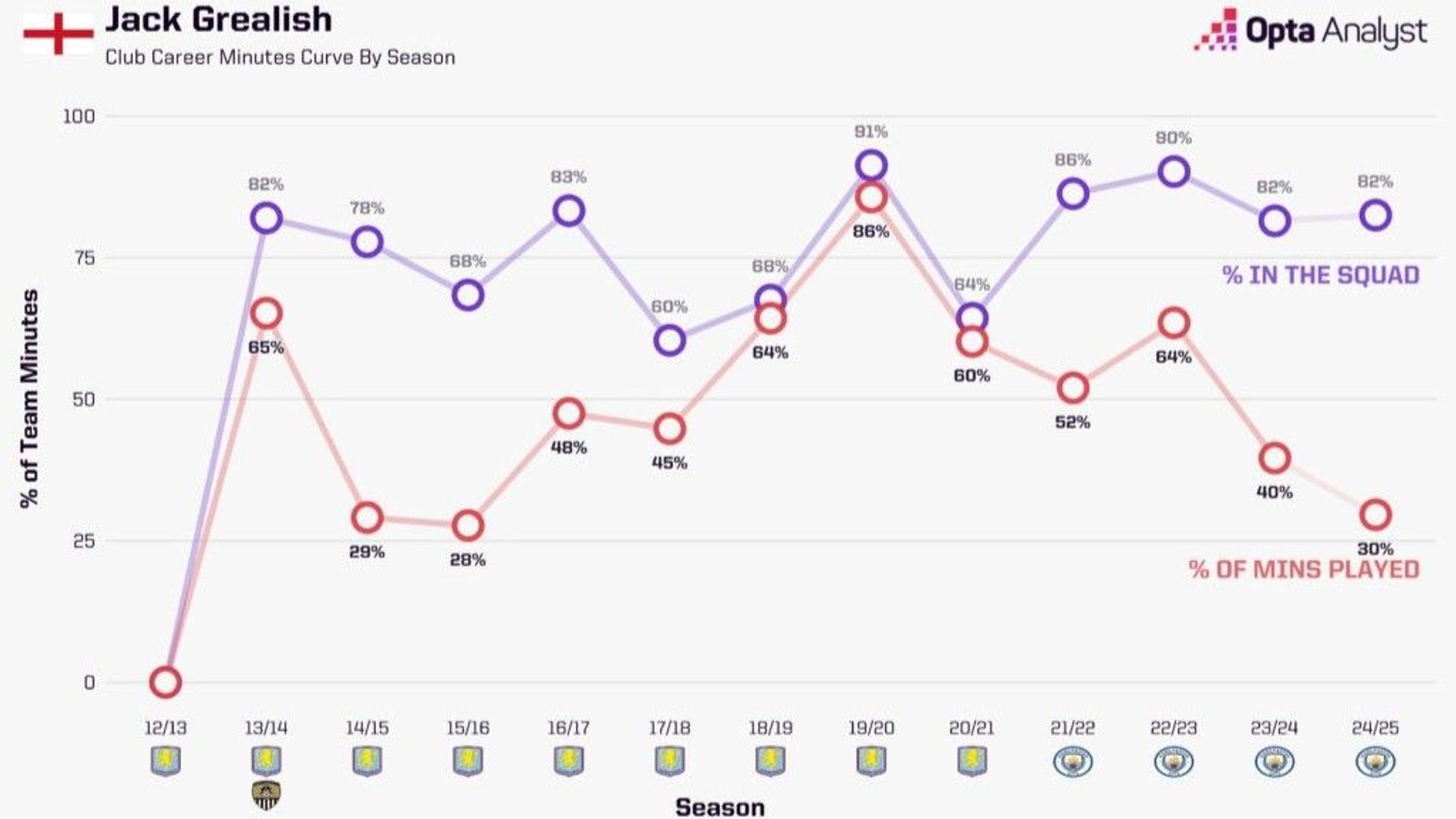
Opta Analyst’s Ali Tweedale looks at how loan move can revive midfielder’s career
Opta Analyst’s Ali Tweedale explores why a loan move to Everton could be the right environment for Jack Grealish to rediscover his form.
As Jack Grealish approaches his 30th birthday next month, it is only slightly dramatic to say he needs to make a success of this move.
A loan to Everton has handed the winger, a key cog in Manchester City’s treble-winning side of 2022/23, the opportunity to revive his career.
But a move away from Man City has felt like it might be inevitable for a little while now. The fall actually came quite a long time ago.
Grealish played 90 minutes in the UEFA Champions League final win over Inter Milan in May 2023.
He played 89 minutes in the FA Cup final against Manchester United that same month, only withdrawn for Pep Guardiola to introduce an extra centre-back to see out the final moments of a 2-1 victory.
His Premier League minutes were managed to keep him fresh, but he was still among the players Guardiola valued most. He started the biggest matches and proved vital in many of them.
After a summer of, well, enjoying himself, injuries disrupted the start of the following season, and his City career never really recovered.
He certainly never got back to his best in City blue. He managed only 1,004 minutes in the Premier League in 2023/24 – less than half the previous season – and looked less and less effective when he did play.
He was left “heartbroken” after failing to make it into the England squad for UEFA Euro 2024 at the end of that season.
In the increasingly sanitised world of sport, Grealish is a loveable normal character, and the group of people who wanted to see him get back to his best stretched far further than the City fanbase.
Unfortunately, though, 2024/25 was even less fruitful. Even with City struggling on all fronts, Grealish could barely get a game.
Despite being in the squad 82 per cent of the time, he played just 30 per cent of available minutes for City. His goal in an 8-0 FA Cup win over Salford City in January was his first goal for the club in more than a year.
The standard of his performances was a far cry from 2022/23.
Grealish’s mins played and availability by season

Click here to zoom in on image.
There have been a few small niggles since then that disrupted his chances of getting a run of games and any momentum, but they alone can’t explain his decline. It is difficult to say for sure what the main reason is.
What we can say with some certainty is that a fresh start feels like it is for the best.
So, can Everton rediscover some of Grealish’s lost magic? Can they get him back to anything like his best?
The environment at Everton won’t be anything like it is at City. There are few properly elite players there, there’ll be no European football, and expectations are much, much lower.
His new side will also have far less of the ball than City do, and Grealish will have to get used to doing more defending than he has done in a few years.
But while he hasn’t done it in a while, this won’t be a complete shock to him. Grealish has some experience of playing for a team more like Everton than City, and he produced some of his best and most exciting football there, too.
At his boyhood club, Aston Villa, Grealish thrived as the main man in a team who were relegated to the Championship, promoted again, and then battled in the bottom half of the table for his final two years there.
He was allowed to roam the pitch, essentially instructed to go wherever he felt he could best influence the game. He was also their captain and most important player.
“I had more freedom at Aston Villa,” he said of his period of adaptation at City. “I had a lot more of the ball at Villa, whereas here [at City] you probably don’t touch the ball as much because you have so many world-class players.”
The stats show that Grealish wasn’t quite right: he didn’t touch the ball more for Villa. However, he did have more touches relative to the amount of the ball his team saw; he had a higher proportion of Villa’s touches.
He also – in a sign of that “freedom” he talked of – made more dribble attempts.
In each of his final three Premier League seasons at Villa, he averaged more attempted dribbles per 90 (between 3.8 and 5.5 per 90) than in any of his four seasons at City (between 2.6 and 3.5 per 90).
In those three seasons, dribbles made up a higher proportion of his touches (between 6.1 per cent and 10.4 per cent) than they did in any of his four seasons at City (between 3.8 per cent and 5.7 per cent).
He also took up more central positions at Villa. Many more of his appearances came in central midfield or in a No 10 position, but even when he played on the left, he was also allowed to come off the flank in search of space.
